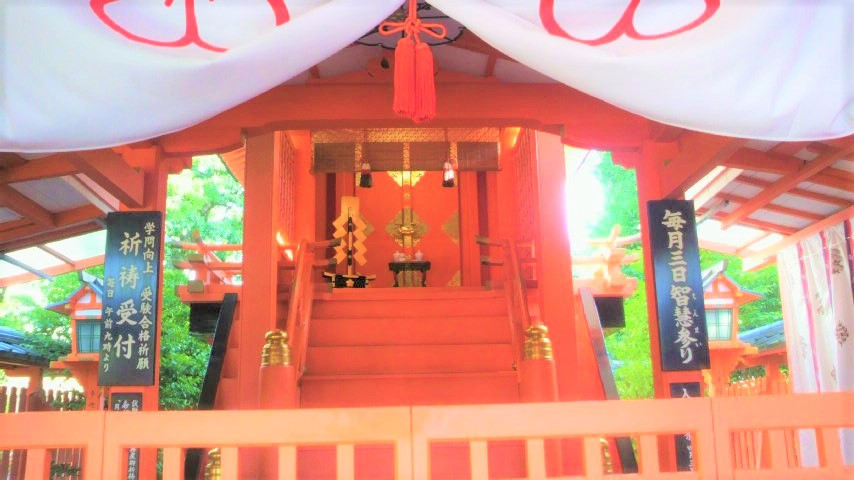Only people mentioned by yae51502951 in this post can reply
Light and LOVE
@LightuptheUniverse
21 October, 03:40
In response yae ebisu to her Publication
I always enjoy your shrine photos! I often imagine I am walking among these!
Can you tell me why there is much red, orange and green colors used, almost exclusively?
Thank you!
Can you tell me why there is much red, orange and green colors used, almost exclusively?
Thank you!
Notice: Undefined index: tg1tga_access in /home/admin/www/anonup.com/themes/default/apps/timeline/post.phtml on line 396
yae ebisu
@yae51502951
22 October, 06:41
In response Light and LOVE to her Publication
In addition, the orange color, which is often used in shrine temples, is also used as an amulet to protect the sanctuary, just like the five colors
This orange color is called vermilion, and vermilion is originally the color of the natural red pigment cinnabar, and vermilion as the color name originally refers to this color
Cinnabar is a mineral composed of mercury sulfide, also known as the philosopher's stone
There is an old legend that cinnabar is made of the blood of the dragon body of the goddess of the Japanese god world
There are many shrines whose names and main deities have been changed by those in power at various times
However, it can be seen that the shrine with a vermilion temple originally enshrined one of the goddesses of the Japanese god world
This orange color is called vermilion, and vermilion is originally the color of the natural red pigment cinnabar, and vermilion as the color name originally refers to this color
Cinnabar is a mineral composed of mercury sulfide, also known as the philosopher's stone
There is an old legend that cinnabar is made of the blood of the dragon body of the goddess of the Japanese god world
There are many shrines whose names and main deities have been changed by those in power at various times
However, it can be seen that the shrine with a vermilion temple originally enshrined one of the goddesses of the Japanese god world
Notice: Undefined index: tg1tga_access in /home/admin/www/anonup.com/themes/default/apps/timeline/post.phtml on line 396
yae ebisu
@yae51502951
22 October, 06:42
In response Light and LOVE to her Publication
In Shinto, which enshrines Japanese gods, five colors are used as lucky charms and amulets
The five colors are "green, red, yellow, white, purple"
Green = East ・ Spring ・ Manners ・ Eyes ・ Seiryu
Red = Middle ・ Summer ・ Benevolence ・ Tongue ・ Suzaku
Yellow = Medium ・ Midsummer ・ Righteousness ・ Mouth ・ Kirin
White = West ・ Autumn ・ Wisdom ・ Nose ・ Byakko
Purple = North ・ Winter ・ Trust ・ Ear ・ Genbu
Each color has this meaning
It is thought that the Ying-Yang Five Elements theory, which was introduced with the introduction of Buddhism, also has an influence
Seiryu・Suzaku・Kirin・Byakko・Genbu
In them, it is said to be a spirit beast that is handed down to the Orient and protects each direction
You can feel the remnants of the fusion of Shinto and Buddhism as the main Japanese people until the law came into effect in the Meiji era
The five colors are "green, red, yellow, white, purple"
Green = East ・ Spring ・ Manners ・ Eyes ・ Seiryu
Red = Middle ・ Summer ・ Benevolence ・ Tongue ・ Suzaku
Yellow = Medium ・ Midsummer ・ Righteousness ・ Mouth ・ Kirin
White = West ・ Autumn ・ Wisdom ・ Nose ・ Byakko
Purple = North ・ Winter ・ Trust ・ Ear ・ Genbu
Each color has this meaning
It is thought that the Ying-Yang Five Elements theory, which was introduced with the introduction of Buddhism, also has an influence
Seiryu・Suzaku・Kirin・Byakko・Genbu
In them, it is said to be a spirit beast that is handed down to the Orient and protects each direction
You can feel the remnants of the fusion of Shinto and Buddhism as the main Japanese people until the law came into effect in the Meiji era
Notice: Undefined index: tg1tga_access in /home/admin/www/anonup.com/themes/default/apps/timeline/post.phtml on line 396


